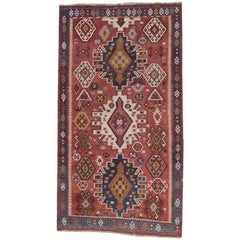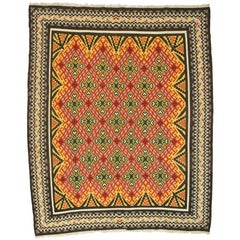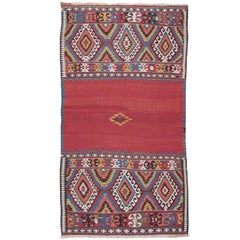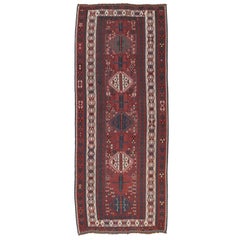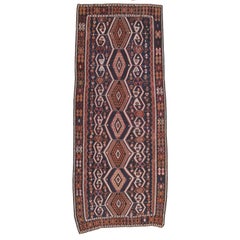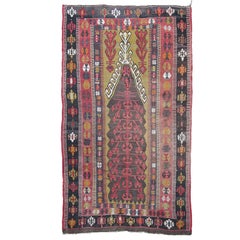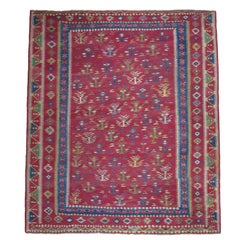Antique Kilim Rugs
Early 20th Century Azerbaijani Antique Kilim Rugs
Wool
Early 1900s Turkish Antique Kilim Rugs
Wool
19th Century Turkish Kilim Antique Kilim Rugs
Wool
Early 20th Century Turkish Antique Kilim Rugs
Wool
19th Century Antique Kilim Rugs
Wool
19th Century Turkish Antique Kilim Rugs
Early 20th Century Turkish Kilim Antique Kilim Rugs
Wool
Early 20th Century Turkish Antique Kilim Rugs
Wool
Late 19th Century Serbian Kilim Antique Kilim Rugs
Wool
19th Century Azerbaijani Antique Kilim Rugs
Wool
1890s Caucasian Antique Kilim Rugs
Wool
1850s Turkish Antique Kilim Rugs
Wool
19th Century Turkish Antique Kilim Rugs
Wool
Late 19th Century Azerbaijani Kilim Antique Kilim Rugs
Cotton, Wool
19th Century Azerbaijani Kilim Antique Kilim Rugs
Wool
Late 19th Century Turkish Kilim Antique Kilim Rugs
Wool
Late 19th Century Turkish Kilim Antique Kilim Rugs
Wool
19th Century Azerbaijani Antique Kilim Rugs
Wool
19th Century Azerbaijani Kilim Antique Kilim Rugs
Wool
Early 20th Century Armenian Antique Kilim Rugs
Wool
Early 1900s Persian Antique Kilim Rugs
Wool, Cotton
Late 19th Century Turkish Kilim Antique Kilim Rugs
Wool
19th Century Turkish Antique Kilim Rugs
Wool
Early 20th Century Azerbaijani Antique Kilim Rugs
Wool
Late 19th Century Turkish Oushak Antique Kilim Rugs
Wool
Early 1900s Turkmen Kilim Antique Kilim Rugs
Cotton, Goat Hair, Wool
Early 20th Century Other Antique Kilim Rugs
Wool, Cotton
19th Century Azerbaijani Kilim Antique Kilim Rugs
Wool
Early 20th Century Azerbaijani Kilim Antique Kilim Rugs
Wool
Early 20th Century Antique Kilim Rugs
Wool
19th Century Persian Antique Kilim Rugs
Wool
Early 20th Century Turkish Bohemian Antique Kilim Rugs
Wool
1920s Moldovan Other Antique Kilim Rugs
Wool
19th Century Central Asian Kilim Antique Kilim Rugs
Wool
19th Century Azerbaijani Kilim Antique Kilim Rugs
Wool
Early 20th Century Persian Antique Kilim Rugs
Wool, Cotton
Early 20th Century Balkan Kilim Antique Kilim Rugs
Wool
1650s Turkish Antique Kilim Rugs
Wool
1650s Turkish Antique Kilim Rugs
Wool, Cotton
1920s Turkish Antique Kilim Rugs
Wool
1650s Turkish Antique Kilim Rugs
Wool
1650s Turkish Antique Kilim Rugs
Wool, Cotton
19th Century Azerbaijani Kilim Antique Kilim Rugs
Wool
1920s Turkish Kilim Antique Kilim Rugs
Wool
19th Century Persian Kilim Antique Kilim Rugs
Wool
Early 1900s Asian Kilim Antique Kilim Rugs
Wool
1880s Syrian Kilim Antique Kilim Rugs
Wool
19th Century Turkish Kilim Antique Kilim Rugs
Wool
Early 1900s Turkish Kilim Antique Kilim Rugs
Wool
Early 1900s Asian Other Antique Kilim Rugs
Wool, Cotton
Early 20th Century Afghan Antique Kilim Rugs
Wool
Early 20th Century Romanian Antique Kilim Rugs
Wool, Cotton
1650s French Antique Kilim Rugs
Wool, Cotton
Early 1900s Azerbaijani Tribal Antique Kilim Rugs
Wool
Early 20th Century Antique Kilim Rugs
Wool
1650s Swedish Antique Kilim Rugs
Wool, Cotton
Early 20th Century Persian Kilim Antique Kilim Rugs
Wool
Early 20th Century Azerbaijani Kilim Antique Kilim Rugs
Wool
1650s Turkish Antique Kilim Rugs
Cotton, Silk
Early 20th Century Afghan Kilim Antique Kilim Rugs
Wool
- 1
- ...
Shopping for Antique Kilim Rugs for Your Home?
Known for their wealth of rich colors and unique weaving tradition, antique and vintage kilim rugs are one of the most distinguishable types of rugs. The term “kilim” is Turkish in origin, but many variations of this type of textile share a common heritage and are practiced all across the Balkans, throughout the Arab world and elsewhere. There are Persian kilim rugs, kilim rugs from Central Asia and more.
It is difficult to definitively pin down the origins of kilim weaving, which is known as a “flatweave” or “slit-weave,” but historians believe that skilled artisans may have practiced versions of it as early as the eighth and ninth centuries A.D. in the Anatolia region of Turkey. Many of the Turkish iterations of these flat-woven rugs are recognizable for their arrangements of dazzling, flowing forms, but a range of motifs can appear in kilim rugs — abstract figures that reference rams’ horns, snakes or running water or motifs that are intended to symbolize concepts such as the tree of life or fertility. In Anatolia, women have used kilims to share narratives about their lives.
The difference between a kilim rug and most other kinds of carpets or pile rugs is in the aforementioned weave. They are made by interweaving variously colored, individual strands of wool (pure soft cotton, silk and goat’s hair are also used with the wool, albeit rarely) versus, say, the Tabriz rugs of Iran, which are hand-knotted rugs. This results in a smooth, frequently reversible surface. It’s a slit-weave because of the gap left between two blocks of color. Kilims are created on a loom, a typically uncomplicated structure mostly made of wood. Owing to the creative freedom that a slit-weave can afford its weaver, they tend to feature a range of bright, contrasting hues like reds, oranges and pinks that appear in bold combinations with deep blues and greens that are brought to life with natural dyes.
Handwoven kilim rugs are less expensive to produce and more durable than other rugs. They were traditionally used as floor coverings in mosques and yurts, as prayer rugs and saddle coverings. And these textiles are pileless: Whereas the Beni Ourain rugs of Morocco can be described as dense with a thick surface or pile, an authentic kilim rug is thin and flat. Because the resulting weave is lightweight, kilim rugs are well adapted for use in the hot summer months, and they are happily embraced by tribal weavers of Morocco, a part of the world that is home to many styles of rugs.
With their striking geometric patterns and provocative color pairings, kilim rugs and wall tapestries are loved by design enthusiasts and can bring charm and interest into any dining room, living room or other interior space.
Find kilim rugs and textiles and other vintage rugs on 1stDibs.
Finding the Right Rugs-carpets for You
Good antique rugs and vintage rugs have made their way into homes across the globe, becoming fixtures used for comfort, prayer and self-expression, so choosing the right area rug is officially a universal endeavor.
In modern usage, “carpet” typically denotes a wall-to-wall floor cushioning that is fixed to the floor. Rugs, on the other hand, are designed to cover a specific area and can easily be moved to new locations. However, the terms are interchangeable in many parts of the world, and, in the end, it won’t matter what you decide to call it.
It’s well known that a timeless Persian rug or vintage Turkish rug can warm any interior, but there are lots of other styles of antique rugs to choose from when you're endeavoring to introduce fresh colors and textures to a bedroom or living room.
Moroccan Berber rugs are not all about pattern. In fact, some of the most striking examples are nearly monochrome. But what these rugs lack in complexity, they make up for in brilliant color and subtle variation. Moroccan-style interiors can be mesmerizing — a sitting room of this type might feature a Moroccan rug, carved wooden screens and a tapestry hung behind the sofa.
Handwoven kilim rugs, known for their wealth of rich colors and unique weaving tradition, are pileless: Whereas the Beni Ourain rugs of Morocco can be described as dense with a thick surface or pile, an authentic kilim rug is thin and flat. (The term “kilim” is Turkish in origin, but this type of textile artistry is practiced all across the Balkans, throughout the Arab world and elsewhere.)
When it comes to eye-catching floor coverings, the distinctive “medallion” pattern of Oushak rugs has two types of rounded shapes alternating against a rich red or blue background created with natural dyes, while the elaborate “star” pattern involves large eight-pointed shapes in diagonal rows alternating with diamonds.
If you’re looking for something unexpected, find a runner rug that pops in your hallway or on your stairs. Dig for dazzling geometric patterns in our inventory of mid-century modern rugs and carpets, which includes works designed by the likes of Swedish textile masters Märta Måås-Fjetterström, Marianne Richter and other artisans.
Carpets and rugs have been around for thousands of years. Prehistoric humans turned to animal skin, wool and fur to craft simple fabrics to soften hard terrain. A 2016 study suggests that "cave lions" were hunted for exactly this purpose, and that decorating your cave with their pelts may have conferred strength and prestige. Although many of these early textiles are still in existence, tracing their precise origins is difficult. Carpets quickly became such a valuable trade commodity that the weavings could easily travel far from their places of origin.
The oldest known carpet was found in southern Siberia. (It may have traveled there from Persepolis in Iran.) For the flat-weave floor rugs crafted by Native Americans, cotton was the primary material before sheep’s wool was introduced in the 16th century. In Europe, carpet-making was fundamental to folk art, and Asian carpets imported to European countries were at one time considered a precious luxury and not intended to remain permanently on the floor.
With the variety of area rugs and carpets rolled out for you on 1stDibs — a collection that includes traditional, modern, minimalist rugs and other coverings of all kinds — things will be looking up whenever you’re looking down.
- What makes a rug a Kilim?1 Answer1stDibs ExpertApril 5, 2022Kilim rugs are identified by their flat weaving technique using two sets of wool ropes. The rugs also have no pile because of this hand-woven technique. You’ll find a variety of Kilim rugs from some of the world’s top sellers on 1stDibs.
- 1stDibs ExpertApril 5, 2022Determining the age of a rug often depends on the style of rug because different styles have evolved at their own rates and with their own characteristics. One thing you can look for is a date; some rugs weave the year into the border. Another thing to make note of is the color of the rug. Bright dyes and synthetic fibers weren’t available until the 1920s for rugs, so authentic antique rugs will have muted tones. Shop a collection of vetted antique rugs from some of the world’s top sellers on 1stDibs.
- What is a kilim rug?1 Answer1stDibs ExpertFebruary 22, 2021A kilim rug is a tapestry-woven rug known for its brilliantly colored, geometric patterns. This type of rug is traditionally made in parts of the Middle East. It can be purely decorative or even function as a prayer rug.
- What is a Turkish kilim rug?1 Answer1stDibs ExpertNovember 2, 2021A Turkish kilim rug is a pileless, tapestry-woven rug that can be used for decorative purposes or as a prayer rug. They are produced by interweaving the warp and weft strands of the weave and typically feature geometrically ornate designs. Shop a collection of vintage and designer Turkish kilim rugs from some of the world’s top boutiques on 1stDibs.
- 1stDibs ExpertAugust 26, 2024The difference between a rug and a kilim is the specificity of the terms. A rug is any soft floor covering. Artisans produce rugs using a wide range of techniques, and rugs may have a flat surface or a raised pile. A kilim is a handmade rug that features a flat weave and is usually made of natural fibers such as wool, silk and cotton. On 1stDibs, find a wide variety of rugs.
 NazmiyalMarch 23, 2021Generally speaking, Dhurrie rugs are cotton flat weaves from India while Kilims are flat woven wool rugs from different location around the world.1stDibs ExpertAugust 17, 2021The difference between Kilim and Dhurrie rugs is the location of creation. Kilim is a name for a flat-woven rug created in Persia. Dhurrie, on the other hand, is a name for a flat-woven rug made in India. Shop Kilim and Dhurrie rugs on 1stDibs.
NazmiyalMarch 23, 2021Generally speaking, Dhurrie rugs are cotton flat weaves from India while Kilims are flat woven wool rugs from different location around the world.1stDibs ExpertAugust 17, 2021The difference between Kilim and Dhurrie rugs is the location of creation. Kilim is a name for a flat-woven rug created in Persia. Dhurrie, on the other hand, is a name for a flat-woven rug made in India. Shop Kilim and Dhurrie rugs on 1stDibs.- 1stDibs ExpertAugust 26, 2024To tell if a kilim rug is real, look for labeling that indicates the fibers. True kilim rugs tend to be crafted by hand out of natural fibers such as wool, silk and cotton. Rugs that contain synthetic fibers like polyester or polyethylene or that have "machine-made" or similar verbiage on their labels are likely not kilims. Next, consider the pattern. The weaving technique used to make kilim rugs usually results in linear geometric patterns. Curving forms or irregular or scattered patterns are unlikely to appear on authentic pieces. If you're still not sure about the authenticity of your floor covering, ask a certified appraiser or experienced antique dealer for a professional opinion. Shop a selection of kilim rugs on 1stDibs.
- 1stDibs ExpertApril 5, 2022Opinions on how old a rug has to be to be considered antique vary. However, most experts will apply the label to any rug produced more than 100 years ago, and call floor coverings produced 50 to 100 years ago vintage. Shop a variety of antique rugs on 1stDibs.
- What is a semi antique rug?1 Answer
 NazmiyalMarch 23, 2021Usually these are rugs that are younger than 80 years old but not new (so things that are between 70 - 30 years old roughly)
NazmiyalMarch 23, 2021Usually these are rugs that are younger than 80 years old but not new (so things that are between 70 - 30 years old roughly) - 1stDibs ExpertApril 5, 2022There are a few red flags you should look for in determining if you have an antique Persian rug. Firstly, check the fringe. Fringes on a Persian rug form from the end of warp yarns, and won’t be sewn on the back. Also check the colors. They should be crisp, with no bleeding of the dyes. Shop a collection of authentic Persian rugs from some of the world’s top sellers on 1stDibs.
 NazmiyalMarch 23, 2021The most expensive antique Persian rug ever sold in auction (so far) is $34,000,000. But the vast majority will cost under $100,000.
NazmiyalMarch 23, 2021The most expensive antique Persian rug ever sold in auction (so far) is $34,000,000. But the vast majority will cost under $100,000.
Read More
Hechizoo’s Original Sin Rug Tempts with Shimmering Copper, Tin and Bronze
Embroidered with snakes, turtles, birds and vines, it celebrates a dazzling natural world before the arrival of Adam and Eve.
Splashy Blooms Bud and Wilt in Artist Santi Moix’s Floral Rug
The colorful design captures the natural splendor of a backyard garden.
In South Africa, Rich Mnisi Is Taking Biomorphic Design to the Next Level
The rising fashion star is having his first solo show of furniture designs, at Southern Guild in Cape Town, and his far-out, snaking forms are like nothing you've ever seen.
The Artists and Designers behind Today’s Coolest Rug Collaborations
Top carpet companies are expanding the arena of artful floor coverings, seeking out creatives from other media and marrying their talents to textiles.
Tantuvi’s New Rugs Were Inspired by the Travertine Quarries of India and the Spanish Steps of Rome
The New York–based rug designers employ earthy colors and time-honored artistry in their creations.
We’re Going Gaga for the New Sasha Bikoff Rugs
The New York interior designer found inspiration in disco culture and astrology for her debut home collection.
Paradise Is Found Underfoot in These Majestic Persian Textiles
Persian garden carpets, with their timeless beauty and unmatched craftsmanship, have an enduring appeal.
12 Mesmerizing Moroccan-Style Interiors
With their rich layers, intricate patterns and elaborate lighting, rooms with a Moroccan influence are easy to spot.
